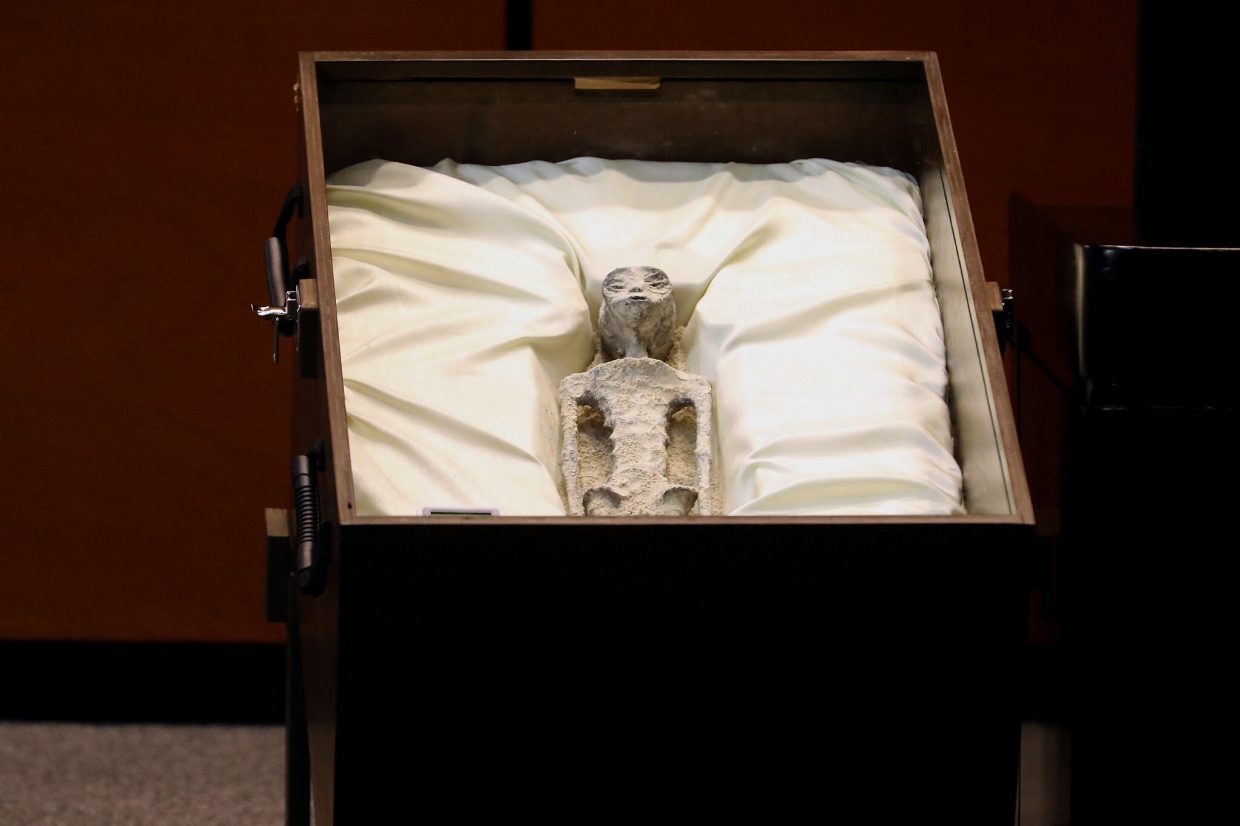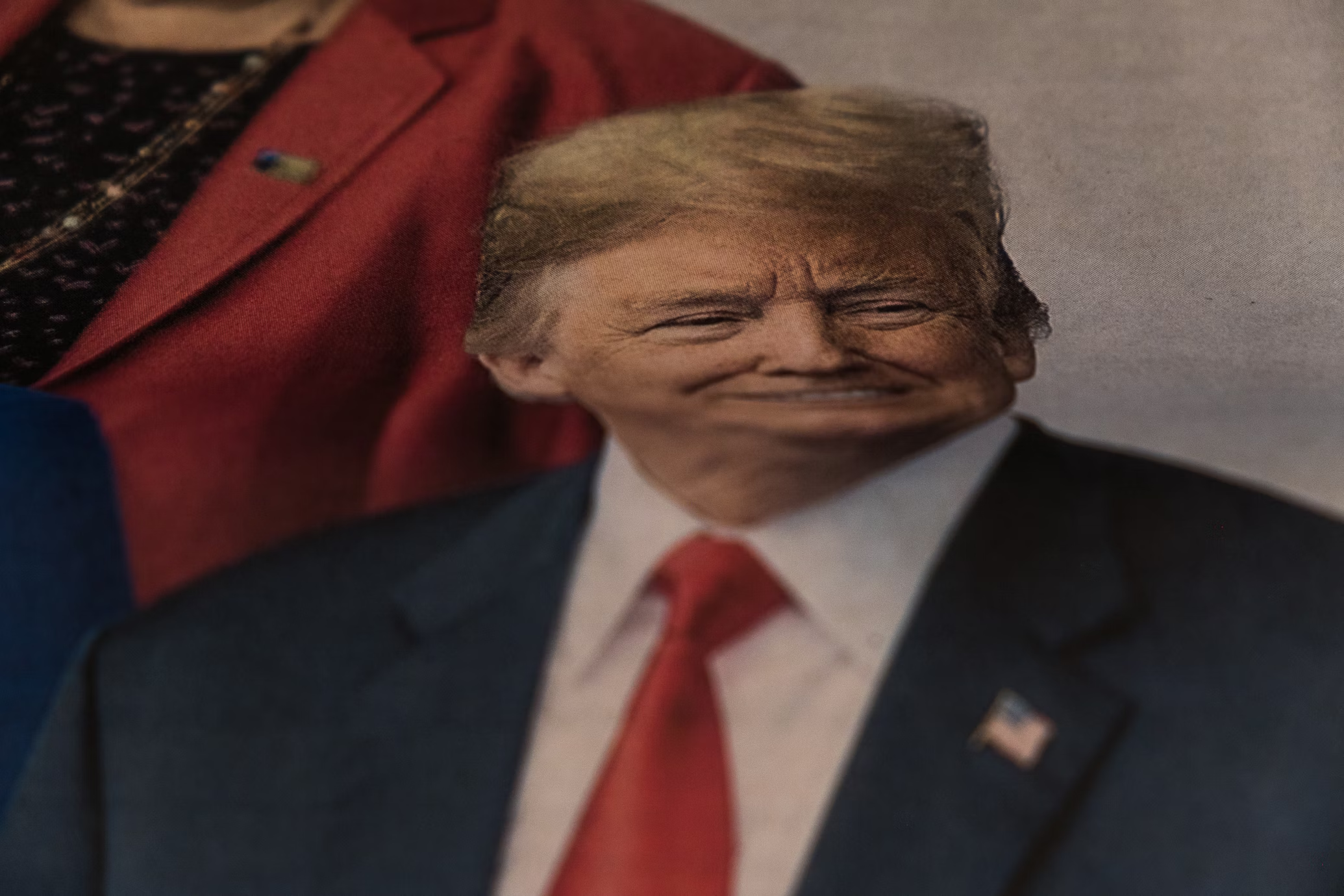Mummified ‘Alien Corpses’ Proven to Be Single Skeletons, Declare Mexican Doctors

Mexican doctors have conducted extensive laboratory studies on two alleged “non-human” alien corpses, debunking claims that they were part of a hoax. These mummified specimens were recently showcased at Mexico’s Congress, sparking excitement among UFO enthusiasts.
Amid arguments from academics, scientists, and archaeologists, the doctors presented their findings, revealing that each corpse belonged to a single skeleton and was not assembled from different body parts. The remains were reportedly discovered in Cusco, Peru, estimated to be around 1,000 years old.
Unidentified Genetic Components
Journalist and UFO researcher Jaime Maussan spearheaded this event in Mexico City. While testifying, Maussan stated under oath that nearly a third of their DNA is classified as “unknown,” suggesting that these specimens do not belong to “our terrestrial evolution.” He emphasized that they were not beings recovered from a UFO crash but rather found in diatom (algae) mines and subsequently fossilized.
Professor Cox has urged for a sample to be sent to the biotechnology company 23andme for independent verification to ensure that these specimens are not extraterrestrial in nature. He argues that it is highly unlikely for an intelligent species from another planet to resemble humans.
This is not the first time Maussan has claimed to have discovered extraterrestrial evidence. In 2015, he declared that a mummified body found near Nazca in Peru belonged to an alien, only for it to later be identified as the remains of a human child.
Skepticism and the Need for Independent Verification
Critics, including academics, archaeologists, and scientists, often argue that mummified remains claimed to be aliens by UFO enthusiasts are typically modified human bodies. They suggest that smaller specimens, such as those showcased in Mexico, are assembled using a combination of animal and human bones. However, the recent tests conducted by Mexican doctors indicate that these remains are from a single skeleton, thus challenging prevailing assumptions.
During his presentation, Maussan disclosed that the specimens had previously undergone examination at the Autonomous National University of Mexico. Scientists used radiocarbon dating to obtain DNA evidence, while X-rays revealed that one corpse contained what appeared to be “eggs.”
The Mexican politicians present expressed their “thoughts” and “concerns” regarding the information shared, concluding that further discourse on this matter is necessary.






